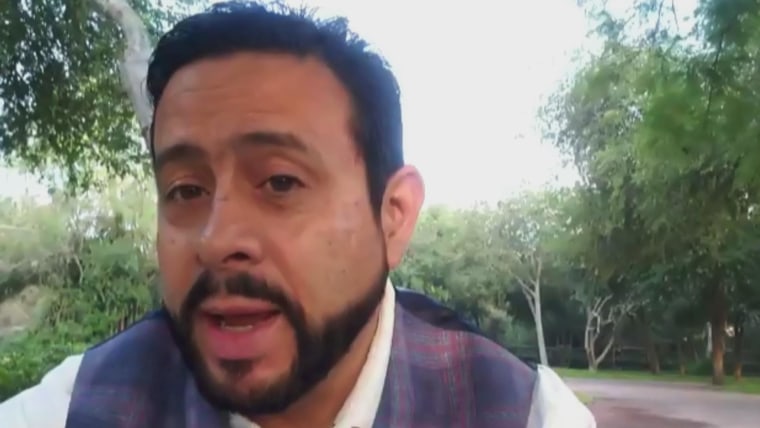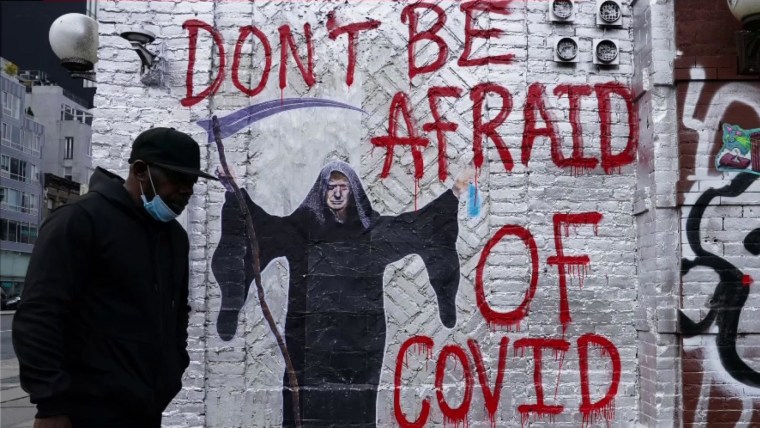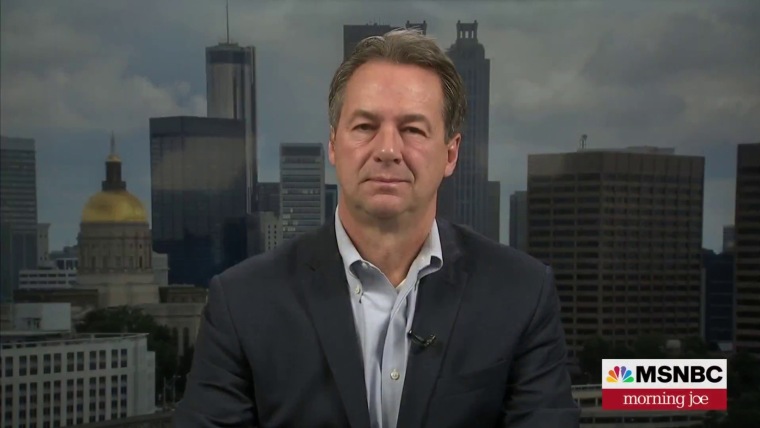As we commemorate the fifth anniversary of the World Health Organization declaring the novel coronavirus a pandemic, this is the second column of a six-part MSNBC Daily series that reflects on the million American lives lost, the political polarization and the declining trust in public health measures that followed the virus’ spread and assesses the country’s preparedness for the next pandemic.
Panola, Alabama, a poor, unincorporated rural town in a poor, rural county, is not exactly brimming with health care providers. So when Covid-19 vaccines became available in early 2021, Dorothy Oliver, a widowed retiree who owns a general store, decided that somebody had to get everyone in her town of 400 or so people vaccinated. “I just felt like I had to do it because the government, nobody does enough in this area,” she said. “This area here is majority Black. Kind of puts you on the back burner.”
The story of what Covid did to rural places is a grim one: full of overwhelming human suffering.
Oliver and Sumter County Commissioner Drucilla Russ-Jackson arranged with a nearby hospital to provide a pop-up vaccination center. Then she went door to door to make sure everyone would get vaccinated and that they had a way to get there. Asked how she convinced her neighbors to get vaccinated as skepticism and conspiracy theories about the vaccines were spreading, Oliver said, “I just be nice to them.” By the time she was done, 94% of Panola’s residents — including every senior citizen in town — had been vaccinated.
Dorothy Oliver’s successful advocacy was a rare feel-good Covid story from rural America, and even though her hard work reflected the lack of health care access — one of the most pressing problems rural areas face — it still demonstrated some of what rural people pride themselves on: neighborliness, mutual concern and self-reliance.
Unfortunately, there were not enough Dorothy Olivers to go around. The broader story of what Covid did to rural places is a grim one: full of distrust, disinformation and overwhelming human suffering.
When the novel coronavirus first arrived in the U.S., it spread rapidly through major cities. Dense urban areas provided a perfect environment for transmission; a single infected person could potentially come in close contact with hundreds of other potential carriers every day. We saw the terrible result: exploding rates of infection, overwhelmed hospitals and bodies piling up faster than they could be buried.
In rural areas, on the other hand, there were no planes landing from China, no subway cars packed with people breathing on each other, and many people in rural parts of the country lead a lifestyle that involves seeing the same small number of people every day. But that safety was only temporary. When Covid did come to rural America, it found different but equally fruitful pathways to bring infection and death.

By the pandemic’s second wave, in the summer of 2020, the death rate in the least dense counties caught up to the rate in the densest counties, then surged ahead. By the fall of 2021, rural Americans were dying from Covid at double the rate of those who lived in urban areas.
Research showed that rural residents were far less likely than other Americans to take precautions against infection such as wearing masks. But the inability or unwillingness to get vaccinated was likely the biggest factor that separated them from their urban and suburban counterparts. In April 2021, when the country was still in the early stages of the vaccine rollout, Centers for Disease Control and Prevention data showed that only a slightly higher proportion of urban residents had been vaccinated, 46% compared to 39% among rural residents. By January 2022, that gap had widened significantly: At that point, 75% of urban residents were vaccinated, but only 59% of rural residents were.
The rural places where devotion to Donald Trump was strongest were also some of the places where Covid hit the hardest.
Rural vaccine skepticism had many sources: suspicion of outsiders telling people what to do, antipathy toward government, widespread conspiracy theories, and hostility toward the medical establishment and a Democratic government in Washington. Add to that the way the pandemic became so intensely politicized, with Republicans attacking Democratic officials and conservative media filled with tirades against Anthony Fauci, then director of the National Institute of Allergy and Infectious Diseases, and panic about supposedly disappearing liberty. It’s no accident that the rural places where devotion to Donald Trump was strongest were also some of the places where Covid hit the hardest.
By 2024, the cumulative death rate was over twice as high in the most Trump-friendly counties — many of which are rural — as it was in the counties where he did the worst in the 2020 election. In rural America overall, the cumulative death rate exceeded 400 per 100,000 population by the fall of 2022; the rate in metropolitan areas was under 300 per 100,000. At that point, had rural Americans been dying of Covid at the rate of their metropolitan counterparts, then 50,000 more of them would have been alive.

As one public health researcher explained, the high rate of rural Covid deaths was fed by “a combination of social, structural, and policy factors, including a lack of state policies designed to protect communities at greatest risk of COVID-19 death, state disinvestment in rural health care and social programs, and vaccine hesitancy fueled by a toxic mix of partisanship and misinformation.”
The blame for the devastation the pandemic caused in rural America is hardly Trump’s alone. But given his spectacular popularity among rural white people in particular — he won 72% of their votes in 2020, according to the Pew Research Center — he had a special responsibility for the welfare of the rural voters who put him in office.
Had Trump wanted to improve life for rural people, he could have addressed the challenge of health care access before Covid ever appeared. He could have encouraged holdout Republican states to accept the Affordable Care Act’s expansion of Medicaid, which provides a lifeline to rural hospitals, nearly 200 of which have closed or severely restricted services over the last two decades. Had he done that, then rural areas would have been better able to confront the pandemic when it arrived.
Trump could have encouraged all his supporters to get vaccinated, rather than downplaying the pandemic.
Trump could have encouraged all his supporters to get vaccinated, rather than downplaying the pandemic, promoting quack cures and turning himself into perhaps America’s most influential vaccine opponent. He could have discouraged rural Americans from making distrust of science and expertise ever more a part of their identity.
Most of all, he could have encouraged his devoted supporters to view the pandemic as a challenge we could confront together, by caring for one another — rather than looking for public officials and fellow citizens on whom to pour our anger. Had he been able to find in himself the decency and altruistic spirit that animated Dorothy Oliver — and that many rural Americans share — he could have made the pandemic better instead of worse for all of us.
Instead, we endured a national trauma whose effects will likely linger for decades, especially in the rural communities that are now even more conservative and even more distrustful of public health measures than they were five years ago. And what will happen if we face another, similar pandemic?
It’s almost too awful to contemplate.

